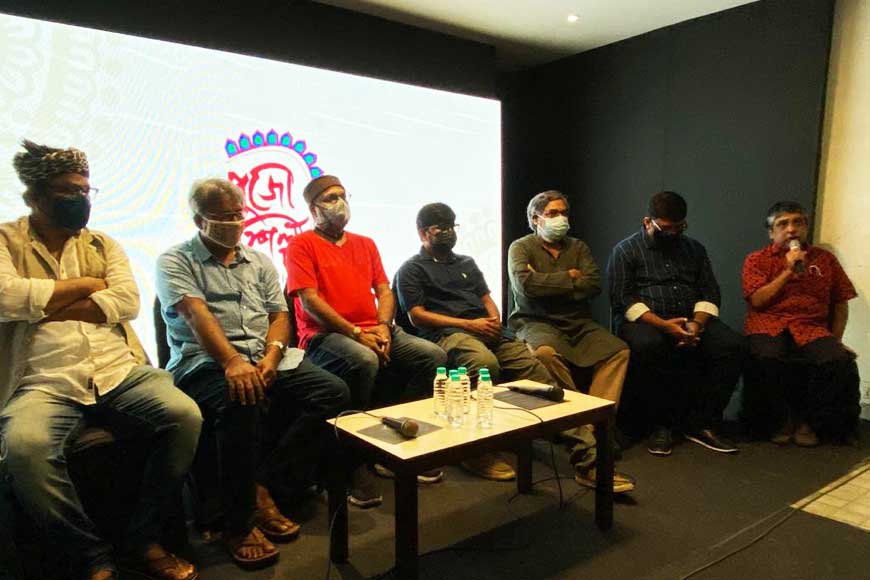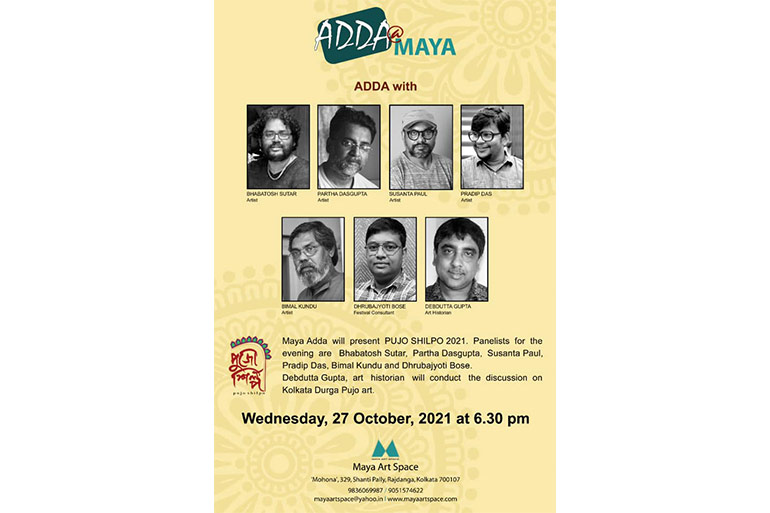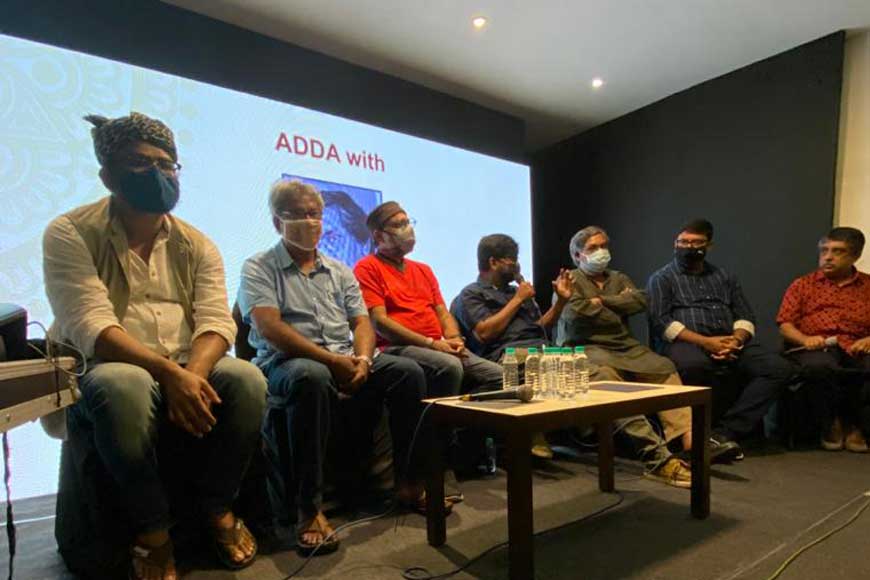Durga Puja or art show? Maya Art Space hosts a to and fro

When did Durga Puja turn into what is probably the world’s largest street art exhibition? If you consider the question ridiculous, consider the facts too. Today, almost all big-ticket pujas in Kolkata habitually employ the services of renowned artists and sculptors, many of whom call themselves art designers, in the race to be unique. And preparations for the next edition of the festival begin as soon as the current edition ends. Indeed, it would be no exaggeration to say that a new category of professionals has made a career out of ‘organising’ Durga Puja.
It is these behind the scenes efforts that came to the forefront at Maya Art Space, where the seventh ‘Pujo Shilpo’ adda or discussion was held on the evening of October 27. The discussion featured artists Bhabatosh Sutar, Partha Dasgupta, Susanta Pal, Pradip Das, and Bimal Kundu, Puja organiser Dhrubajyoti Basu and art historian Debdutta Gupta. Madhuchhanda Sen moderated the discussion on behalf of Maya.
At the onset of the discussion, we saw a display of the current year’s Puja creations by the four artists. Gupta then drew a timeline of how the changing nature of Durga Puja - from the courtyards of wealthy families to ‘baroyari’ pandals, from pandals of ordinary cloth and bamboo to spectacular themed creations - has influenced the nature of art associated with it too, an art that is still evolving.
Kundu added that the ‘theme’ Puja craze in our times may lead to art for art’s sake, where the idol of the goddess inspires neither devotion nor wonder. In his view, the aesthetics of a particular theme ought to encompass the puja as a whole, instead of creating a discrepancy between the pandal, for instance, and the idols within.

Sutar, the multiple-award-winning art college graduate whose stunning idols have seamlessly bridged the gap between art and tradition, has earlier said that he focuses on keeping the “spiritual quality and maternal aspect” of the goddess intact in his creations. That is the only boundary he wishes to impose on his art. This year, he talked about the smaller pujas, which draw relatively little public attention, and how he has enjoyed doing the rounds of these small pandals, how their aesthetics have moved him.
Pal, yet another award-winning art designer, has admitted in the past that he is “not a particularly religious person”, and that Durga Puja is probably the only festival in the world “which promotes art, knowingly or unknowingly, on the strength of funds raised through public subscriptions”. However, as in the past, so during this evening’s discussion, he drew a line between “gimmickry” and innovation. This last was an aspect that Dasgupta focused on as well, talking about how Durga Puja encourages artists to experiment.

Basu narrated an account of how he witnessed a young girl encouraging her father to soak in the beauty of the pandal and the idols rather than vainly try to photograph them. In his opinion, public appreciation for art and artists is not as limited as we think, that Durga Puja as an art exhibition has many more takers than would appear to be the case.











